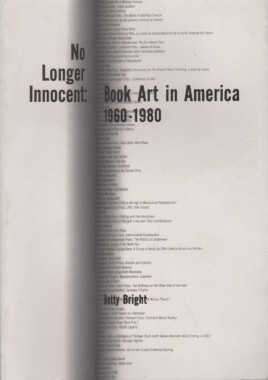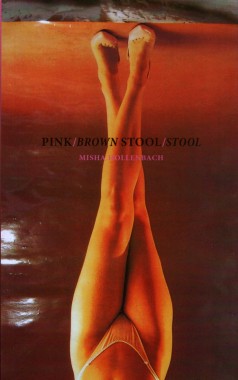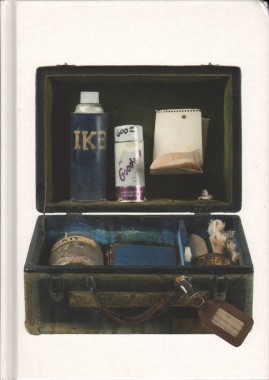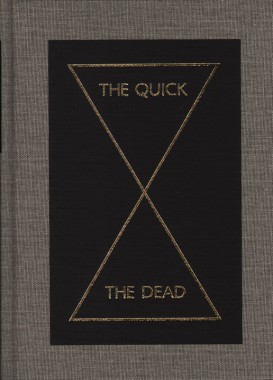
Betty Bright, No Longer Innocent: Book Art in America 1960-1980
Softcover, 320 pp., offset 4/1, 7 x 10 inches
Edition of 2000
ISBN 978-1-887123-71-6
Published by Granary Books
$40.00 ·
This important history of the artist’s book, a flourishing form which over the years has often been greeted with confusion by critics, collectors, historians and artists, aims to spell out its role in contemporary art and to claim for it a vital and heretofore unacknowledged status since the blossoming of the artform in the 1970s. Renowned scholar and curator Betty Bright takes an inclusive view of the varied field in order to redress its marginalization, identifying three distinct types: the fine press book, the deluxe book, and the bookwork. She covers crucial supporters of the form, like New York’s Center for Book Arts, Franklin Furnace, and the Visual Studies Workshop Press in Rochester, New York, as well as key organizations and figures in Chicago, Atlanta, San Francisco and Los Angeles. Bright examines how artist’s books have responded to specific movements, such as Pop, Fluxus and Conceptualism, and how the book arts’ own mini-art world of the 1970s was shaped by seminal exhibitions, fledgling nonprofit organizations and collectors.
Art, Betty Bright, DAP, Dieter Roth, Ed Ruscha, Emily McVarish, John Latham, Lucas Samaras, Marcel Broodthaers, Marcel Duchamp, Phillip Gallo, Richard Tuttle, Sol LeWitt

Misha Hollenbach, Pink/Brown Stool/Stool
Softcover, 64 pp., offset 4/4, 4.5 x 7 inches
Edition of 250
ISBN 978-0-9825936-3-9
Published by Seems
$24.00 ·
Born last century. Based in Melbourne, Australia. Misha Hollenbach lives and works in many languages, times and places. Hollenbach is one half of the brand Perks and Mini (P.A.M.) a multi media excursion encompassing art, design, fashion, and publishing. He is also part of The Changes, music and art collective.
Hollenbach is influenced by energy, as his work moves through various mediums including sculpture and painting, printed media and collage. Rather than shy away from objects deemed useless, or unwanted, he embraces their meaningless meanings to create an unfamiliar language containing familiar objects. By employing found objects and pairing them with wit and humor, he continues the narrative of the Dada and Pop artists.
In a lineage that extends through Jim Shaw, Andy Warhol and Marcel Duchamp, the rallying around the already readymade repositions things for freer symbolic enterprises. In the re-presentation of shit, Misha touches upon the etymological origins of faeces, which derives from faex, the Latin for dregs. He is using the dregs, things humans have casted away; shit becomes a metaphor for the unwanted.
By putting these outcasts back together with ready mix, the images of the objects do not return to us as they normally should; they lose their original function. With this method, he is breaking our own need to put the image back together in a fixed or familiar way. He strips back the structure of meaning — and this brings about a danger: the readymades return as phantasms and representations of abstract ideas. A Hush Puppy becomes a Push Poopy. Doodoo becomes Dada.
—Timothy Moore
Andy Warhol, Art, Culture, Distribution, Jim Shaw, Marcel Duchamp, Misha Hollenbach, Seems, Timothy Moore

Robert Pincus-Witten and Rotraut Klein-Moquay, Yves Klein: USA
Hardcover, 204 pp., offset 4/1, 176 x 242 mm
Edition of 2000
ISBN 978-291627-564-2
Published by Editions Dilecta
$32.00 ·
This book, produced in collaboration with the Yves Klein Archives, recounts the relationship between Yves Klein, one of the major artists of the postwar period, and the United States — a relationship of mutual fascination and reciprocal influence. Numerous documents, many of them previously unpublished, bear witness to the close ties that Klein forged with the U.S. The rising stars of the early 1960s American art scene (Robert Rauschenberg, Jasper Johns and Frank Stella, plus Marcel Duchamp) all make an appearance here, as does President Eisenhower! The book includes an interview with Rotraut Klein-Moquay, who talks about her trip to the United States with Yves Klein in 1961, as well as the artist’s comments on his own work. It also includes a hitherto unpublished essay by the American critic Robert Pincus-Witten, who met the protagonists of this story when he worked for dealer Leo Castelli.
In the spring of 1961, Yves Klein and his fiancee Rotraut Uecker, a distinguished artist herself, were en route to New York City. Leo Castelli, a leading American art dealer, had scheduled an exhibition of the work of “Yves le Monochrome” (as the painter had styled himself), to begin on April 11th. The exhibition marked Klein’s first solo show in the United States and its closing, set for the 29th of that month, virtually coincided with the artist’s thirty-third birthday, celebrated just the day before.
At the time, apart from the focus of a circle of fellow artists, noted critics and European dealers, a few alert collectors and many incensed detractors, Klein was still far from being recognized as the most influential artist to have emerged in postwar France — as he is regarded today; nor would one even dream that in scarcely more than a year he would be dead.
Art, DAP, Frank Stella, Jasper Johns, Leo Castelli, Marcel Duchamp, Robert Pincus-Witten, Robert Rauschenberg, Rotraut Klein-Moquay, Rotraut Uecker, Yves Klein

Peter Eleey, The Quick and the Dead
Hardcover, 352 pp., offset 4/1, 6.75 x 9 inches
Edition of 2000
ISBN 9780935640939
Published by Walker Art Center
$45.00 ·
Artists have always used their imaginations to see beyond visible matter — to posit other physics, other energies, new ways of conceiving the visible and new models for art — but the past century has seen an explosion of such investigations. In the fashion of a Wunderkammer, The Quick and the Dead takes stock of the 1960s and 70s legacy of experimental, or “research” art by pioneers like George Brecht, who posited objects as motionless events and asked us to consider “an art verging on the non-existent, dissolving into other dimensions,” and Lygia Clark, whose foldable sculptures sought to dissolve the boundary between inside and outside, each “a static moment within the cosmological dynamics from which we came and to which we are going.” In a series of encounters with art made strange by its expansions, contractions, inversions and implosions in time and space, The Quick and the Dead surveys more than 80 works by a global, multigenerational group of 50 artists, scientists and musicians — among them James Lee Byars, Joseph Beuys, Marcel Duchamp, Harold Edgerton, Ceal Floyer, Felix Gonzalez-Torres, Pierre Huyghe, The Institute for Figuring, Paul Ramirez Jonas, Stephen Kaltenbach, On Kawara, Christine Kozlov, David Lamelas, Louise Lawler, Paul Etienne Lincoln, Mark Manders, Kris Martin, Steve McQueen, Helen Mirra, Catherine Murphy, Bruce Nauman, Rivane Neuenschwander, Claes Oldenburg, Roman Ondák, Adrian Piper, Roman Signer and Shomei Tomatsu, among many others. Includes reprints of texts by diverse luminaries such as John McPhee, Jalal Toufic, Oliver Sacks, Allan Kaprow and Robert Smithson.
Adrian Piper, Art, Bruce Nauman, Catherine Murphy, Ceal Floyer, Christine Kozlov, Claes Oldenburg, DAP, David Lamelas, Felix Gonzalez-Torres, Harold Edgerton, Helen Mirra, James Lee Byars, Joseph Beuys, Kris Martin, Louise Lawler, Marcel Duchamp, Mark Manders, On Kawara, Paul Etienne Lincoln, Paul Ramirez Jonas, Peter Eleey, Pierre Huyghe, Rivane Neuenschwander, Roman Ondák, Roman Signer, Shomei Tomatsu, Stephen Kaltenbach, Steve McQueen, The Institute for Figuring, Walker Art Center



